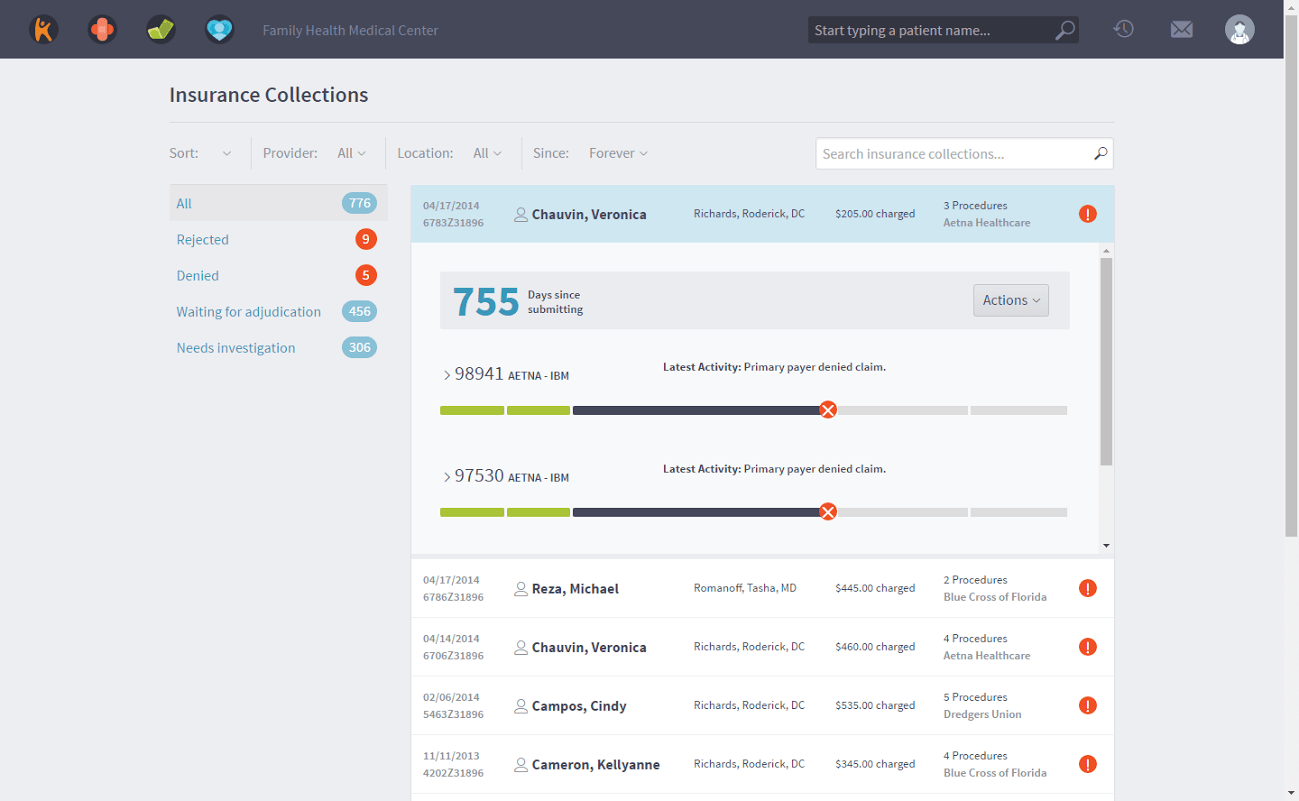As you may have heard, Allscripts bought out free EMR-EHR software Practice Fusion in a $100 million deal in late February. An unfortunate outcome for many small practices is that come summer 2018, Practice Fusion will move away from their free model to a
$100 a month fee per physician. This change is significant enough that practices should start looking at Practice Fusion alternatives.
The company has been quietly notifying customers of the change, which will move the platform away from its previous model sustained on ad sales. Practice Fusion has not publicly announced its move to a subscription model outside of quiet customer emails, but it has hinted at new product offerings in March 2018. We’re interested to see where that goes.
In the meantime, if your practice has been using Practice Fusion because it was free, you might as well consider your paid and free options now, before you’re forced into a subscription. We’ve done some of the hard work for you and brought together the top EMR-EHR software for small to medium practices.
These are options that we think might be a good fit for anyone looking for Practice Fusion alternatives, but there are plenty of EMR-EHR products on the market for all specialties and practice sizes. Check out our
EHR EMR Software software category page.
Practice Fusion Alternatives

Kareo’s EMR software is built specifically for individual and small practices, not for large hospital groups. The commitment to individual providers is clear in the free support, free onboarding, free training, and straightforward pricing. Available modules include clinical, billing, and marketing, which is particularly interesting for small practices without the funding and marketing departments provided by larger hospital groups. Analytics give providers access to billing and revenue opportunities with customizable reporting and dashboards. The payment model requires practices to pay for billing services, but they get the EMR as a free add-on.

The only free option on this list, OpenEMR is an open source EMR that is Meaningful Use certified. Practices can download the program and install on their own servers in-house or in the cloud. Open EMR offers remote access and encryption, and is HIPAA-friendly. Notable features include a patient portal, billing, prescription support, medical decision rules and workflows, and patient scheduling. Because OpenEMR is an open source software, it does not come with direct support. Those who go this route should be prepared to familiarize themselves with support documentation and use software forums for support or hire a developer to help install and perform any necessary customizations.

eClinicalWorks’ subscription plan is based on a per-provider, per-month cost. The software includes robust systems that help practices track internal communications and external messaging to specialists. The EHR is cloud-based, and practices can learn the tool with online webinars and support. Best of all, there are no startup or install costs and free initial training for practices with under 9 providers. Notable features include reporting and Meaningful Use dashboards to improve practice outcomes. The new eCW 10e version of the software has an improved interface with fewer clicks and a modern design. Healow Hub integrates patient data from wearables and mobile devices for complete care.

Yup, Allscripts has bought Practice Fusion, but that doesn’t mean you should discount their EMR offerings. They have a small to medium practice option in addition to their popular enterprise/hospital version that combines EHR, population management, financials, and precision medicine options. Look for eprescribing and workflows to help move patients through treatment without a lot of manual actions on the parts of the providers and office staff.

Cerner’s ambulatory EHR software connects providers with patients and claims to save practices time and money. The Dragon Voice dictation system comes with all versions, and makes it easy for providers to update charts quickly. Cerner’s built in analytics and performance improvement tools help practices improve their medical and administrative efficiency. Look for helpful features like radiology support, eprescribing, and laboratory management tools. Connect with financial tools to streamline billing and payments.

You probably know them as an insurance company, but Athena also provides medical software to practices and medical groups. Look to AthenaClinicals for EHR, billing, patient engagement, orders, secure text messaging, and Epocrates, a prescription interaction and contraindication intelligence program built directly in the clinical software. All of this is available on a mobile app to access patient care where providers are and gain flexibility in the practice.

ChartLogic provides software that combines EMR, practice management, patient portal, billing, and managed IT services. ChartLogic built their EMR on PrecisionVoice voice recognition software, so the platform is built for provider dictation to charts rather than being retrofitted. The UI shows a complete patient note without a lot of drop-downs and searching for settings, which ChartLogic claims makes a 90-second patient note possible. Helpful features include a patient portal, template builder, and data share across locations.
***
Don’t wait until Practice Fusion sends you that first bill to start looking for a new EHR-EMR software for your practice. The transition will go much easier for your team if you can plan a data transfer and employee training period before the big switch. Check out the nearly 200 EHR-EMR options available with our
EHR-EMR software category page.
Top Electronic Health Record Software Recommendations












